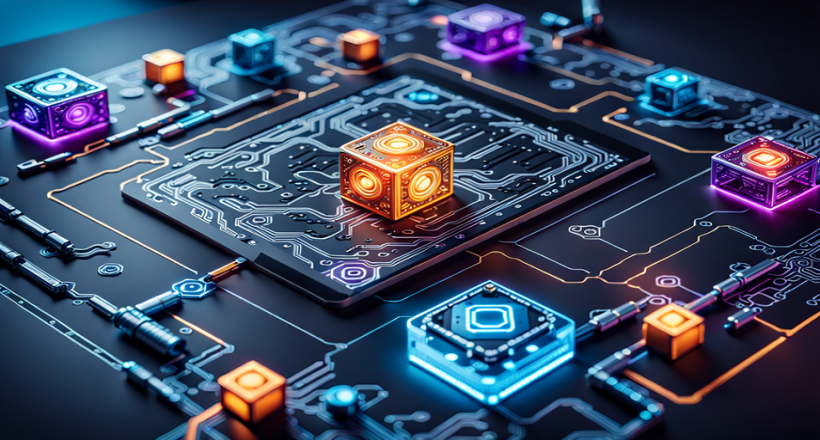
A blockchain is a distributed ledger technology that forms the backbone of
cryptocurrencies such as Bitcoin and Ethereum. At its core, a blockchain is
essentially a decentralized database or list of records, known as blocks, that
are linked together using cryptographic techniques. Each block contains a set
of transactions, and these blocks are linked together in a chronological and
immutable chain.
One of the key features of blockchain technology is its decentralized nature, meaning that it is not controlled by any single entity or authority. Instead, it operates on a network of computers, known as nodes, which work together to validate and record transactions. This decentralization ensures transparency, security, and resilience against censorship or tampering.
Every participant in the blockchain network has a copy of the entire ledger, making it highly transparent and resistant to fraud or manipulation. Additionally, the use of cryptographic techniques ensures that once a transaction is recorded on the blockchain, it cannot be altered or deleted, providing immutability and trust in the system.
Overall, blockchain technology enables secure, transparent, and efficient peer-to-peer transactions without the need for intermediaries like banks or financial institutions. It has applications beyond cryptocurrencies, including supply chain management, voting systems, digital identity verification, and more, making it a revolutionary technology with wide-ranging implications for various industries.
Almost all cryptocurrencies, including Bitcoin, Ethereum, Bitcoin Cash, and Litecoin, rely on blockchain networks for security. This means that their accuracy is continuously verified by a significant amount of computing power.
The transaction records stored in the blockchain are crucial for most cryptocurrencies because they facilitate secure peer-to-peer payments without the need for intermediaries like banks.
Due to the cryptographic features of blockchain networks, payments made via cryptocurrencies can be more secure than traditional debit/credit card transactions. For example, when making a Bitcoin payment, sensitive information is not required, significantly reducing the risk of financial information or identity theft.
Blockchain technology extends beyond cryptocurrency and holds promise for various applications. It is utilized in medical research, enhancing healthcare record accuracy, optimizing supply chain processes, and more.
Some advantages of blockchains include:
How does a blockchain work?
Imagine a chain where each link represents a piece of transaction data. As you move down the chain, you encounter older transactions. This chain, or blockchain, serves as a transparent record of a cryptocurrency's entire transaction history. It is maintained by a decentralized network of computers running open-source software, ensuring its accuracy and security. New transactions are added to the chain periodically, and participants are rewarded with digital currency for contributing computing power.
Who invented the blockchain?
The blockchain was introduced by an individual or group using the pseudonym Satoshi Nakamoto, who published a whitepaper in late 2008 outlining the concept of Bitcoin, a new form of digital currency. Nakamoto aimed to enable online transactions between strangers worldwide without the need for intermediaries like banks or payment processors.
To address the challenge of double spending, where the same money could be used multiple times, Nakamoto proposed a solution involving a network constantly verifying Bitcoin transactions. This network, known as the blockchain, stores and verifies every Bitcoin transaction across a global network of computers.
Bitcoins are generated through a process called mining, where computers in the decentralized network contribute computing power to maintain and secure the blockchain. Miners are rewarded with cryptocurrency for their contributions.
Every Bitcoin transaction is recorded and verified on the blockchain, with new transactions periodically grouped into blocks and added to the existing chain.
What's the future of blockchains?
Blockchain technology has the potential to revolutionize various industries beyond cryptocurrencies. It can be utilized in fields such as medical research, healthcare records management, and supply chain optimization. Additionally, blockchain platforms like Ethereum offer a versatile computing environment for developing diverse applications. The future of blockchains holds promise for transforming the way we live and work.